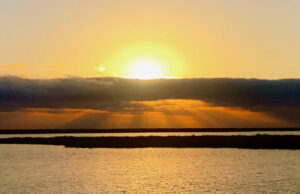Moving to Texas over 20 years ago, I was worried about the lack of public lands in the Lone Star State. We were coming down from Montana, which is over 37 percent public land, including the splendors of Glacier and Yellowstone national parks, and prior to that I had lived in Washington state, which has nearly 42 percent public lands, including Olympic, Mount Rainier and the North Cascades national parks. Texas has two glorious national parks in the Guadalupe Mountains and Big Bend, but the vast majority of the outdoor recreation takes place on state lands, managed by Texas Parks and Wildlife.

Salt Basin Dunes, Guadalupe Mountains NP (photo by Dan Oko)
This week, recognizing the importance of these lands, voters approved a billion dollar trust fund to acquire more land for parks, improve trail facilities and fishing access. The Texas State Park system has been celebrating its 100th anniversary this year, and considering that private lands still dominate 95 percent of the remarkable landscape that is Texas, it will provide resources for upcoming generations of Texans. Knowing a good thing when they see it, voters supported Proposition 14, a constitutional amendment, that will create the largest single investment the state has made for public lands in the history of Texas. And it does so without levying new taxes on 30 million Texas residents.
Earlier this year, I collaborated with the team at Texas Parks and Wildlife Magazine on a story about the impact of park users, and how to alleviate the pressure of record visitation on our public lands. In the years prior, I worked with the non-profit Texas Parks and Wildlife Foundation as an ambassador for their “We Will Not Be Tamed” program, visiting some new park properties that will be opening in the coming years. So, you might say, I had some skin in the game.

Sun setting over the marsh, Sea Rim SP (photo by Dan Oko)
As a fan and supporter of public lands, who appreciates the ecological, economic and recreational resources Texas State Parks represent, I raise a glass to the successful effort — and Texas voters.
